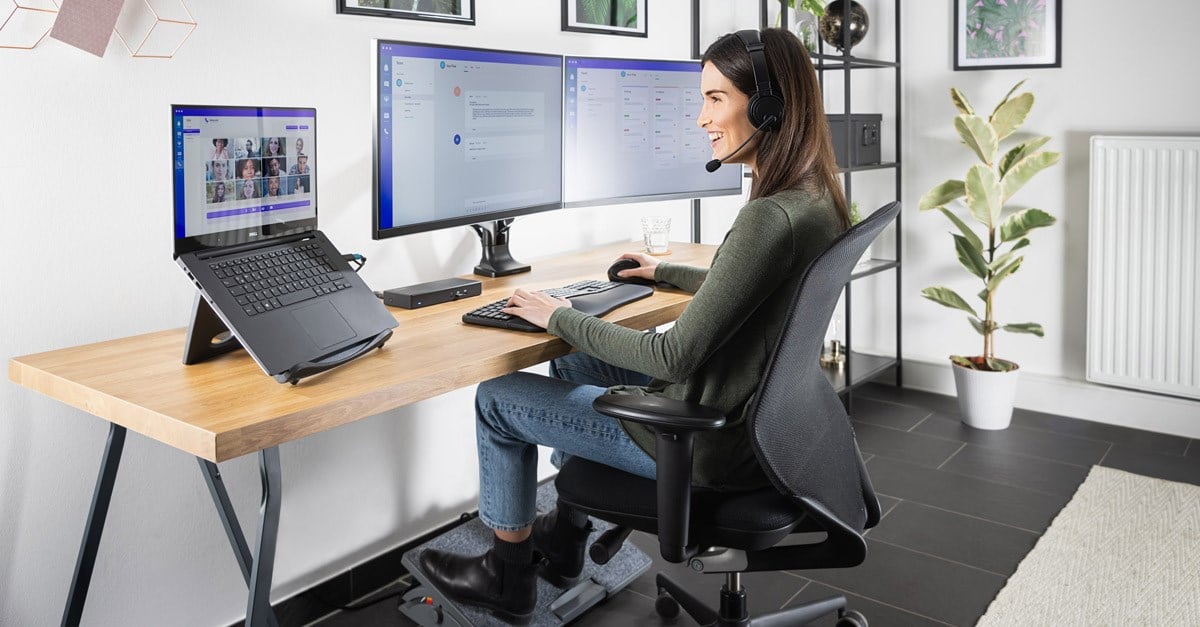
Ergonomic Excellence: Tips for a Comfortable Home Office
Working from home has become the norm for many, emphasizing the importance of a well-designed home office for both productivity and well-being. Explore these home office ergonomics tips to create a comfortable and efficient workspace that supports your health.
Setting Up an Ergonomic Workspace
The foundation of a healthy home office is an ergonomic workspace. Begin by choosing a comfortable chair that provides proper lumbar support and promotes good posture. Ensure your desk is at a height that allows your arms to rest comfortably on the surface, preventing unnecessary strain on your shoulders and wrists.
Investing in a Quality Desk and Chair
A high-quality desk and chair are pivotal for a comfortable home office setup. Opt for a desk that offers ample surface area for your work activities and has storage solutions to keep your space organized. Pair it with an adjustable chair that promotes a neutral posture, reducing the risk of musculoskeletal issues.
Positioning Your Computer Monitor at Eye Level
Proper screen positioning is crucial to prevent eye strain and neck discomfort. Set your computer monitor at eye level to avoid tilting your head up or down for extended periods. Consider using a monitor stand or adjusting the height of your chair to achieve the ideal viewing position.
Utilizing Proper Lighting
Good lighting is often overlooked but plays a significant role in reducing eye strain and creating a pleasant work environment. Position your desk near natural light sources whenever possible and supplement with task lighting to illuminate your workspace adequately. Avoid glare on your computer screen by adjusting the lighting angle.
Implementing Regular Breaks and Movement
Sitting for prolonged periods can have adverse effects on your health. Incorporate regular breaks into your work routine, stand up, stretch, and move around. Simple exercises like neck rotations, shoulder stretches, and walking can enhance blood circulation and alleviate muscle tension, contributing to overall well-being.
Creating a Distraction-Free Zone
A clutter-free and organized workspace minimizes distractions and fosters a focused work environment. Invest in storage solutions to keep essential items within reach while maintaining a clean and tidy desk. A well-organized space promotes productivity and reduces stress.
Choosing Ergonomic Accessories
Consider ergonomic accessories to enhance your home office setup. This may include an ergonomic keyboard and mouse, which help maintain a natural hand position and reduce the risk of repetitive strain injuries. Explore accessories that align with ergonomic principles to optimize your work experience.
Implementing a Dual-Monitor Setup
For tasks requiring multiple documents or applications, a dual-monitor setup can significantly improve efficiency. Position the monitors at eye level and ensure they are at an arm’s length away. This setup reduces the need for constant screen switching and minimizes neck movement.
Prioritizing Cable Management
A clutter of cables not only looks messy but can also pose tripping hazards. Invest in cable organizers or clips to keep wires neatly organized and secured. This not only enhances the aesthetics of your home office but also contributes to a safer workspace.
Seeking Professional Ergonomic Advice
For a personalized approach to home office ergonomics, consider seeking advice from ergonomic professionals. They can provide insights tailored to your specific needs, recommending adjustments and tools that align with your work habits and preferences.
Conclusion: Nurturing a Healthy Work Environment
In conclusion, creating an ergonomic home office is essential for both comfort and productivity. By implementing these tips, you can cultivate a workspace that promotes good health and well-being. Explore more about Home Office Ergonomics Tips to discover additional insights and resources for achieving ergonomic excellence in your home office.










